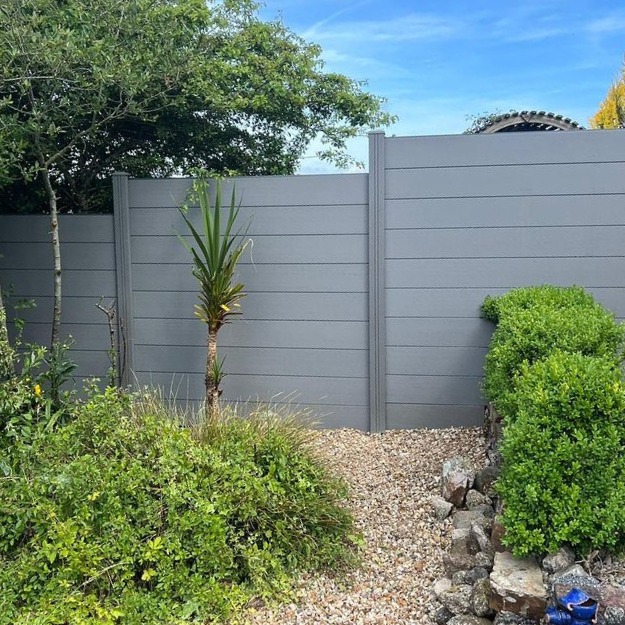All Categories
Featured

When thinking about mounting a fence on your residential or commercial property, among one of the most crucial actions is to understand whether you need a permit. Fencing installations commonly require an authorization to make certain that the structure conforms with local zoning regulations, constructing codes, and security standards. The particular authorizations required can vary depending upon your location, the type of fencing you plan to mount, and the elevation or positioning of the fence. Right here's a guide to help you browse the process of getting a fence authorization and make sure that your installment is legal and hassle-free.
Why You Need a License for a Fencing Setup. The license process assists neighborhood authorities verify that your fencing does not interfere with website traffic visibility, regard your home lines, or break height constraints. Mounting a fence without a license can result in penalties, removal of the fencing, or delays in building and construction, so it's vital to examine whether a permit is required prior to starting your task.
Kinds of Permits You May Need. There are a few common sorts of permits you could need for a fence setup:
Building Authorization. A building permit is the most common permit needed for fence installments. This permit makes certain that the fence fulfills safety and security criteria and is created according to regional building regulations. A structure authorization is typically needed if the fencing exceeds a certain elevation (typically 6 feet), is made from certain products, or is located near a public sidewalk or roadway.
Zoning Authorization. A zoning license might be needed to confirm that your fence abides by neighborhood zoning laws. Zoning laws can dictate where a fence can be positioned on your home, exactly how high it can be, and whether it is admitted certain locations (such as along building lines or ahead yards) For instance, some districts have regulations restricting the elevation of fences in the front yard to guarantee visibility for pedestrians and vehicle drivers.

Problem Authorization. If you are constructing a fence near your home line or close to a street, you might require a problem license. A problem refers to the range a structure, consisting of fencings, should be from the residential or commercial property line. Problem guidelines vary by place, and making sure that your fencing is put correctly can avoid conflicts with neighbors and stay clear of violations.
Homeowner Organization (HOA) Authorization. You may need authorization from them in addition to regional permits if you live in an area governed by a House owner's Organization (HOA) HOA regulations commonly cover the kind of materials, height, style, and shade of fencings. Even if your city government does not call for a permit, your HOA may still have particular standards that need to be followed.
How to Apply for a Fence License. To make an application for a fencing permit, you'll need to contact your neighborhood structure department or preparation office. The application procedure generally involves filling up out a kind, paying a fee, and submitting a website plan of your building that shows the suggested area of the fence. You might likewise require to consist of details regarding the products, height, and style of the fence.
In some instances, a regional authorities might require to check your property prior to authorizing the authorization. Once the permit is granted, you will be licensed to continue with your fencing installation.
When Is a License Not Required? In particular situations, an authorization may not be needed. These situations can include:
Low Height Fences: In many areas, fencings that are listed below a certain height (often 3 to 4 feet) might not need a license, especially if they are put in the yard or various other non-visible locations.
Fencing Replacement: If you're replacing an existing fencing with the exact same elevation and material, some areas might not need a new permit.
Non-Obtrusive Fences: Attractive or momentary fences, such as those used for gardening or landscaping functions, may not need authorizations as long as they are reduced and not long-term.
Nevertheless, it is very important to talk to your neighborhood zoning office or structure division, as regulations can differ by territory.
Effects of Not Getting a License. Stopping working to acquire the essential permits can result in significant effects. These include penalties, required elimination of the fence, and even hold-ups in building and construction. Additionally, if your fence does not fulfill neighborhood policies, you could deal with legal concerns with neighbors or neighborhood authorities.

Verdict. By ensuring that you adhere to neighborhood policies and obtain the essential authorizations, you can guarantee and stay clear of expensive errors that your fence is legitimately compliant. Inspect with your neighborhood structure department, HOA, and zoning office to identify what licenses are required for your particular fencing project.
Latest Posts
Boost Your Home's Outside with Weathercraft's House siding Solutions
Published May 21, 25
1 min read
Secure Your Financial Investment with Specialist Rain Gutter Installment
Published May 20, 25
1 min read
Choosing the Right Roofing Shade: Influence On Power Efficiency
Published May 19, 25
1 min read
More
Latest Posts
Boost Your Home's Outside with Weathercraft's House siding Solutions
Published May 21, 25
1 min read
Secure Your Financial Investment with Specialist Rain Gutter Installment
Published May 20, 25
1 min read
Choosing the Right Roofing Shade: Influence On Power Efficiency
Published May 19, 25
1 min read